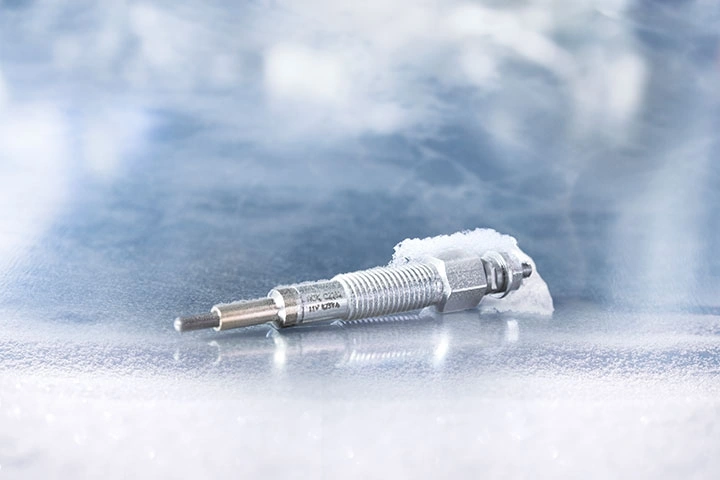You asked Google & NGK SPARK PLUG answers! - Part 9: Engine Speed & Position sensors

1. What is a camshaft position sensor and what is its function?
The camshaft sensor measures the position of the camshaft. This signal – in conjunction with the crankshaft position – is used to determine in which stroke each cylinder is. The engine control unit (ECU) needs the signal to determine when to inject fuel and to define the right ignition timing.
2. Where is the camshaft position sensor located?
The camshaft sensor(s) is installed near the camshaft(s), in or near the cylinder head. The camshaft itself is an important part of the engine, since it opens the valves. The position of the camshaft sensor is (together with the crankshaft location) an indicator for the position of the piston and allows for the ECU to determine in which stroke each piston is.
3. How is a camshaft position sensor tested?
For an inductive sensor, the internal resistance can provide a hint that the sensor is defective. In most cases, a nominal resistance reads between 500 and 1500 Ohms. For hall sensor types (installed in almost all modern engines), and for a proper diagnosis of inductive sensors, the output signal should be recorded with an oscilloscope.
4. What happens after a camshaft position sensor is replaced?
After the installation of a new camshaft position sensor, many vehicles will require a ‘learning’ period. This may entail the use of some scan tools. The ECU will identify the exact position of the new sensor the moment the signal arrives (the hall sensing elements in the sensor housing are not necessarily at the same position as in the old sensor – this causes the signal to come a bit later or earlier).
5. What causes a camshaft position sensor to go bad?
The most common reasons for the failure of a camshaft position sensor include: water in the connector or sensor, broken wire and old age. Camshaft position sensors have no dedicated exchange interval. When they fail, it impacts the ECU’s input signal, although in most cases, the ECU will still be able to keep the vehicle running.
6. What are the symptoms of a bad camshaft sensor?
Symptoms of a bad camshaft position sensor include: rough idling, engine stalling, a reduction in engine power, reduced mileage and poor acceleration. The check engine light will appear on the dashboard if the sensor is not functioning properly, and Diagnostic Trouble Codes (DTC) will give readings such as P0340 or P0011 (camshaft position sensor Bank 1), P0021 (camshaft position sensor Bank 2). In addition, if the engine has variable camshaft timing, it will not function if the sensor is gone bad.
7. What is a crankshaft sensor and what is its function?
The crankshaft sensor is an electronic device used in internal combustion engines. It measures the rotational speed and position of the crankshaft. This is the most important information the ECU needs in order to be able to work. Crankshaft sensors generally use either the inductive principle or Hall effect principle and cannot be interchanged.
Hall effect sensors feature integrated electronics and have three pins. They possess an external power supply of 5V and a square output signal of approx. 0V/5V. This type of sensor can detect a position even if the wheel is at a standstill (‘tooth or gap’).
Inductive sensors have two to three pins and generate a wave-form output signal but have no external power supply. This signal is only transmitted when the wheels are turning, with the voltage rising when the wheel speed is increased.
Hall effect sensors offer many benefits. These include: low speed detection, even from a standstill, a lighter smaller design, lower sensitivity to electromagnetic interference, higher resistance to vibrations and temperature fluctuations. In addition, changes in the air gap between the sensor and the toothed wheel have no direct effect on the signal.
8. Where is the crankshaft sensor located?
The crankshaft sensor is installed near the crankshaft, in or near the lower engine block. The crankshaft itself is connected (via rods) to the pistons, and – via the clutch – to the gearbox and converts the linear up and down movements of the pistons to a rotary motion. The crankshaft sensor is able to pick up the signal of a toothed wheel or disc which rotates with the crankshaft.
9. What causes a crankshaft sensor to go bad?
The most common reasons for the failure of a crankshaft sensor include: water in the connector or sensor, broken wire and old age. Crankshaft sensors have no dedicated exchange interval.
10. What are the symptoms of a bad crankshaft sensor?
The engine will not start or run if the crankshaft sensor has completely failed. Therefore it is very important to identify any symptoms early. These include: bad starting, jerking, engine stalling (or completely dying), poor performance and misfiring. The check engine light will appear on the dashboard if the sensor is not functioning properly.
Get to know our exhaust gas & differential pressure sensors here →
 Niterra Blogs
Niterra Blogs








